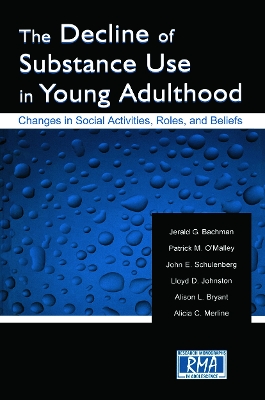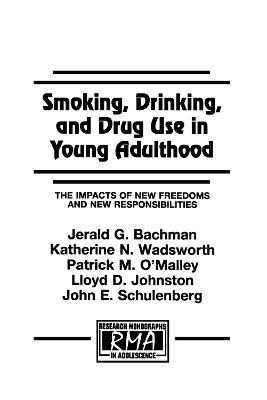Research Monographs in Adolescence
3 total works
The Decline of Substance Use in Young Adulthood
by Jerald G Bachman, Patrick M. O'Malley, John E. Schulenberg, Lloyd D. Johnston, Alison L. Bryant, and Alicia C. Merline
This book is intended as a thoughtful extension to Bachman et al.'s well-received monograph Smoking, Drinking, and Drug Use in Young Adulthood. That volume showed that the new freedoms of young adulthood lead to increases in substance use, while the responsibilities of adulthood--marriage, pregnancy, parenthood--contribute to declines in substance use. The Decline of Substance Use in Young Adulthood examines how the changes in social and religious experiences and in attitudes toward substance use observed among young adults are related to changes in substance use, family transitions, living arrangements, college experience, and employment. The research uses a variety of analysis techniques and is based on the nationwide Monitoring the Future surveys of more than 38,000 young people followed from high school into adulthood.
The research covers the last quarter of the 20th century, a period when drug use and views about drugs underwent many important changes. In spite of these shifts, the overall patterns of relationships reported in this book are impressive in their consistency across time and in their general similarity for men and women.
Specific questions addressed include the following:
*As young adults experience new freedoms and responsibilities, do their attitudes about drugs change?
*Do their religious views and behaviors shift?
*Do their new freedoms and responsibilities affect the amount of time they spend in social activities, including going to parties and bars?
*And how are any of these changes linked to changes in cigarette use, alcohol use, marijuana use, and cocaine use?
Smoking, Drinking, and Drug Use in Young Adulthood
by Jerald G Bachman, Katherine N. Wadsworth, Patrick M. O'Malley, Lloyd D. Johnston, and John E. Schulenberg
Why do some young adults substantially change their patterns of smoking, drinking, or illicit drug use after graduating from high school? In this book, the authors show that leaving high school and leaving home create new freedoms that are linked to increases in the use of cigarettes, alcohol, marijuana, and cocaine. They also show that marriage, pregnancy, and parenthood create new responsibilities that are linked to decreases in drug use.
The research is based on more than 33,000 young people followed from high school through young adulthood by the nationwide Monitoring the Future project. Every two years, participants reported on their drug use, as well as their schooling, employment, military service, living arrangements, marriages, pregnancies, parenthood, and even their divorces.
The unique qualities of this research--large nationally representative samples, follow-ups extending up to 14 years beyond high school, and multiple approaches to analysis and data presentation--allowed the examination of several important influences simultaneously, while retaining much of the rich detail encountered in the real world. On the whole, the results are encouraging, suggesting that the potentials for change and improvement during the transition to adulthood are as important as the detrimental effects of problem behavior in adolescence. This research is a "must" read for anyone concerned with how new freedoms and responsibilities impact adolescents, young adults, and the use of licit and illicit drugs.


